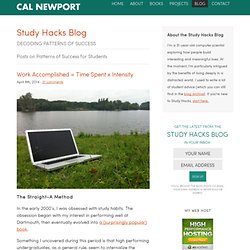

SPEED. Speed-Reading Techniques By Keith Drury, Associate Professor, I was a college student when one of our chapels featured a guest speaker who taught us how to speed-read.

At the time I didn't need the skill since most collateral reading assignments in my courses were under 500 pages. Just the same I started practicing for the fun of it—sort of like a private parlor game. Treating speed reading lightly ended when I wound up in graduate school at . Step one: Get rid of the Myths MYTH 1: is linear. MYTH 2: True reading is word-for-word. MYTH 3: is a laborious task which takes a long time. MYTH 4: All parts of a book are of equal value. MYTH 5: faster will reduce retention. So, having banished the reading myths about reading, what are the actual steps toward rapid reading? Step one: Get Ready to Read Rapid reading is serious work and you must get ready for it just like you’d prepare for racing in the 500. SECOND: Ask, what is my purpose? THIRD: Do a quick pre-read. Learning to Think Critically. From the author: Despite great strides in our understanding, the average person still does not understand science in the facts or in the practice, and instead fills the void with pseudoscience.

This reflects a worldview that values an emphasis on commonly accepted, traditional lore, and a general disinterest in the role of science and reason in our lives. Science is perceived by the media, government, and popular conciousness as something that happens to other people. This is unacceptable. We need to find a way to reach out with reason to the unreasonable, with knowledge to the ignorant, or else we will be unprepared when the moment of crisis finally arrives. There has never been a more important time to value and respect science, technology and reason. Those who value science can not retreat into their academic towers. I have a message and a challenge to all viewers.
Watch the full documentary now (playlist - 2 hours, 18 minutes) Study Hacks » Patterns of Success for Students. Work Accomplished = Time Spent x Intensity April 8th, 2014 · 31 comments The Straight-A Method In the early 2000′s, I was obsessed with study habits.

The obsession began with my interest in performing well at Dartmouth, then eventually evolved into a (surprisingly popular) book. Something I uncovered during this period is that high performing undergraduates, as a general rule, seem to internalize the following formula: A mnemonics and memory improvement resource. One of the widest held explanations of how memory operates, is that impulses from different areas of the brain and from the senses, enter the limbic system (situated in the central area of the brain), and are then passed through the mamillary body.

These memory impulses then travel around the fornix, to terminate at the hypocampus and the cingulate gyrus. These limbic structures are the ones that it would seem are responsible for the recording and the retrieval of memories. It also has been found, that damage to these structures is the cause of many of the more acute forms of amnesia. Learning curves A useful phenomenon to understand as a prelude to mnemonics, is that of learning curves. Basically what the above diagram illustrates, is that information studied at the beginning and at the end of a study period, is far more readily recalled than is information studied in the middle. Primacy and Recency effects State dependent learning Or for a KINDLE download Click here.
The Leitner System - StumbleUpon. Contents General Flashcard Information How Do I Create Flashcards on Cram.com?

Using our site to create your very own flashcard sets is simple. First click on Create Flashcards. You will then enter the title of your set as well as a description for your flashcards. Now you can enter your flashcards. Creating Flashcards Manually: Simply type in the text for the front of your card then fill in the back of the card. Once all your cards are inputted click the ‘Create Set’ button to save your set. Using Import Options to Create a Set: Need to create lots of cards quickly, create cards from a spread, or import cards from another site? Import Using Google Docs: Select ‘From Google Docs’ under Import Options.
How Can I Edit My Flashcard Sets? Sign in to your account. 5 natural, non-nerdy steps for learning… anything. Photo by carloseduravier Get ur freak on Headbanger.. hit me, hit me, hit me, hit meMissy Elliot ~ Get ur freak on ~ Nobody (or almost nobody) likes to study; I know I don’t. But it’s something we have to do, it’s a natural and necessary part of our development as human beings, not just for your school or carreer. But just because you don’t like it doesn’t mean it has to become a drag; no way! You can make it acceptable at least, perhaps even rewarding. 1. Picture by sosarem Learning is an unpleasant activity not just because it feels like you’re wasting your time or stuff like that; in most cases, it’s a subconscious response. Study Guides and Strategies - StumbleUpon.